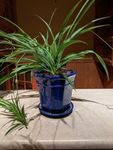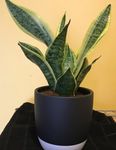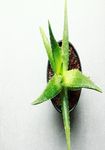PEAS AND CARROTS - IN.gov
←
→
Page content transcription
If your browser does not render page correctly, please read the page content below
PEAS AND CARROTS
Indiana FSSA’s Division of Aging January 2021
“Be at war with your
vices, at peace with
your neighbors, and let
every new year find you
Taking care of your eyes is important. Presbyopia, floaters, dry eyes, tearing, cataracts, a better man.”
glaucoma, age-related macular degeneration (AMD), retinal detachment, and conjunctivitis
are some common eye problems associated with aging. -Benjamin Franklin
Since Glaucoma Awareness Month is celebrated in January, the focus of this article will
be on glaucoma. According to the Cleveland Clinic, glaucoma, is the 2nd leading cause of
blindness in the world and the only way to detect its presence is through regular
comprehensive dilated eye exams.
Glaucoma can occur without cause; however it is affected by several factors. Intraocular
eye pressure is the most important factor. Drainage canals between the iris and cornea of
the eyes become clogged with deposits, which do not allow the fluid that your eye produces
to flow freely creating a build up of the fluid which then results in increased pressure on the
eye. The increased pressure can damage the optic nerve, resulting in glaucoma.
Types of glaucoma include:
Open-angle (the most common) can go undetected for years due to tiny deposits building In This Issue
up in the eye’s drainage canals, clogging the canals slowly.
Glaucoma Awareness
Closed –angle caused by a narrowing of the angle between the iris and cornea causing the
drainage canals to become blocked. It occurs suddenly with symptoms of eye pain and Household Plants
headaches, requiring immediate medical attention.
Word Search
Normal-tension results when eye pressure is normal and more common in those of Asian
descent. The cause is not known.
National Hot Tea Day
Congenital occurs when drainage canals are not formed properly in the womb.
Recipe
With any of the above types of glaucoma, you may experience: eye pain or pressure, red
eyes, nausea and vomiting, tunnel vision, blurred vision, low vision, headaches, or rainbow
-colored halos around lights.
Any race or gender can be affected and the risk increases with age. However, those at
higher risk include: African Americans and Latinos, those with a family history of
glaucoma, and those with diabetes or high blood pressure.
Treatment to slow down additional vision loss may include laser treatment or surgery, oral
medications, or prescription eye drops.
Source: https://my.clevelandclinic.org/health/diseases/4212-glaucomaNational Houseplant Appreciation Day
Houseplant Appreciation Day is celebrated on January 10th, marked as a day to appreciate the importance of
houseplants. What is a houseplant? Simply, a houseplant is a plant that is grown indoors, grown in cooler
temperatures, grown in lower light, and grown in low humidity per gardenersnet.com. Almanac.com states
that there are 2 varieties of indoor pollutants: particulates (include dust, mold spores, and pollen) and Volatile
organic compounds (gases released from paints, fabrics, plastics, wallpaper, carpet, and solvents ). House-
plants are known to absorb carbon dioxide from the air while returning oxygen through photosynthesis. Other
benefits include reducing stress and fatigue, reducing noise level, improving home décor, and naturally
improving air quality. It is recommended to have 1-2 plants per 100 square feet of floor space to reach
maximum benefits. Below is a list of some common houseplants.
5 Common Household Plants
Aloe Vera– An easy to maintain member of the succulent that loves sunlight. Reported to
filter out formaldehyde. Also reported to release oxygen continuously throughout the night.
Peace Lily (Spathiphyllum sp)– loves humid conditions, tolerates little to no sunlight, cleans
the air of alcohols, formaldehyde, acetone, benzene, and tricholorethylene Tip: water with
distilled water or rainwater
Snake Plant (Sansevieria trifasciata)– also known as the mother-in-law’s tongue, removes
benzene, trichloroethylene, xylene, toluene, and formaldehyde from the air. Reported to be
a good bedroom plant as it converts the carbon dioxide to oxygen while you sleep.
Areca Palm (Chrysalidocarpus lutescens) – loves indirect sunlight, removes formaldehyde,
helps restore moisture to the air, and is a good daytime oxygen producer
Spider Plant (Chlorophytum comosum)- enjoys moderate sunlight, very forgiving in terms of
watering, may reduce psychological and physiological stress in addition to purifying the air.
Resources: http://www.gardenersnet.com/fun/houseplantappreciation.htm, https://www.almanac.com/air-purifying-houseplants,
https://www.ftd.com/blog/design/air-purifying-plants, https://www.goodhousekeeping.com/uk/house-and-home/g32319013/air-
purifying-plants/,(Aloe Vera, & Peace Lily) images courtesy of Pixabay.com, Spider Plant image courtesy of R. McClaren, Snake
Plant & Areca Palm images courtesy of K. GarnerWORD SEARCH
Word Search Bank
ALOE VERA S C Q P A L X M I C S F S K G
ANTIOXIDANTS L O A R E V E O L A O Y A D L
O N O P T I C N E R V E R C A
CARBON DIOXIDE
N G O Q L J M U M B M A O I U
CONGENITAL E E L L Y A G A E O I X A N C
DRAINAGE H N O V X I L O P N O T K A O
FATIGUE P I N M T D A G A D I L H G M
Y T G A E J O G H I B Z E R A
FORMALDEHYDE
L A F H O J E D T O X J J O N
GLAUCOMA
O L Y S T N A D I X O I T N A
HOUSEPLANT P D G O I N A D J I G K Q Z F
OOLONG E H W W E B Z N G D U Y G O W
OPTIC NERVE
C Z V L T N A L P E S U O H C
X P O L L U T A N T S Q R A U
ORGANIC
K P V W C X W A Z V I S I O N
POLLUTANTS
POLYPHENOLS
VISION
National Hot Tea Day (January 12, 2020)
A great beverage for breakfast, lunch, or dinner; tea
is the second most consumed beverage in the Unit-
ed States. The traditional varieties include: black,
green, oolong, yellow, yerba mate, and white made
Image courtesy of Pixabay from the Camellia sinensis plant.
Traditional teas contain caffeine and polyphenols, which act as antioxi-
dants. The polyphenol content can be reduced with the addition of sugar,
cream or milk. Consuming plain tea reaps the most health benefits.
Herbal teas do not contain caffeine and do not come from the Camellia
sinensis plant. They are made from the leaves of other plants, seeds, roots,
flowers, fruit, spices, or dried
Type of Tea Water Temp Brewing herbs.
Time
White 70-80° C or 2-3 minutes
The schooloftea.org has the fol-
lowing recommendations for
158-176° F
brewing tea:
Green 70-80° C or 2-3 minutes Use 220 ml of water for 1 tea bag
158-176° F or 1 tsp full of loose leaf tea
Oolong 80-90° C or 2-3 minutes
Resources: https://ww.hsph.harvard.edu/
176-194° F nutritionsource/food-features/tea/, https://
Black 95-100° C or 3-5 minutes www.schooloftea.org/module/how-to-brew-a-
perfect-cup-of-tea.html
203-212° FWarm Honey Green Tea
Contact Us
Source: Diabetic Living Magazine
http://www.eatingwell.com/recipe/266309/warm-honey-green-tea/#nutrition Contact the Division of
Servings: 4, Serving Size: 7 oz. Aging at
Nutrition Information: 16 calories, 0.2g Protein, 5g Carbohydrates
1-888-673-0002
(0.6g dietary fiber),10.4mg Vitamin C, 8.4mg Calcium, 0.2mg Iron
8.8mg Magnesium, 109.1mg Potassium, 7.7 mg Sodium Monday through Friday
8 a.m. to 4:30 p.m. EST
Ingredients:
4 Cups Water or visit us online:
4 lemon peel strips (2 1/2 X1inch each) www.in.gov/fssa/2329.htm
4 orange peel strips (2 1/2 X 1 inch each)
Division of Aging
4 green tea bags
402 W. Washington St.,
2 tsp honey
P.O. Box 7083, MS21
4 lemon slices Room W-454
Indianapolis, IN 46204
Directions:
1. Stir together the water, lemon peel strips, and orange peel strips in
a medium saucepan. Bring to boiling; reduce heat. Simmer,
uncovered, for 10 minutes. Remove the lemon and orange strips
with a slotted spoon and discard.
2. Place tea bags in a teapot; immediately add the simmering water
mixture. Cover and let steep according to the tea package
directions (1 to 3 minutes). Remove the tea bags, squeezing
gently. Discard the tea bags. Stir in honey. Pour the tea into four
heatproof mugs or cups and garnish each with a lemon slice.
PLACE
STAMP
HEREYou can also read

























































